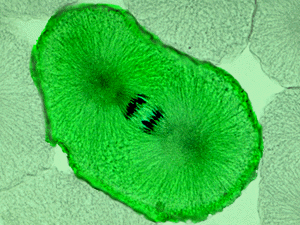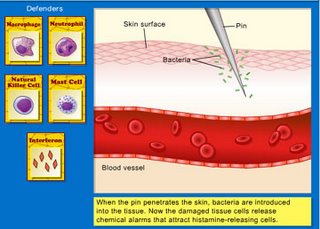Today and tomorrow we will be reviewing for the final exam. Below is a list of questions to help you study. Items in bold are only for the honors classes.
1. Describe the difference between cytokinesis in animal cells and plant cells?
2. List two way that meiosis differs from mitosis.
3. How is cancer related to the cell cycle?
4. Describe the structure of a chromosome.
5. What is independent assortment, and how does it affect the genetic makeup of offspring cells?
6. Describe how you could determine if a dividing cell is an animal cell or a plant cell.
What structures would you look for?
7. Why is crossing over important?
8. Describe the relationship between the cell cycle and mitosis.
9. Describe the role that the spindle fibers play in mitosis.10. Explain why Crossing-over is an important source of genetic variation.
11. What types of cells does mitosis occur in?
12. Explain the difference between a diploid cell and a haploid cell?
13. Explain the difference between cytokinesis in eukaryotic plant and animal cells?
14. What is Interphase? What makes up and occurs during each part of Interphase?
15. Explain the Difference (Contrast) between Sex Chromosomes and Autosomes?
16. What are homologous chromosomes?
17. What is the cell cycle?
Classical Genetics
1. Describe Mendel's two laws of heredity.
2.
What happens during meiosis that would allow genes located on the same chromosome to separate independently of one another?3. Give an example of a sex-linked disorder.
4. How can two individuals who are phenotypically “normal” for a disorder produce a child who is affected.
5. Distinguish between codominance and incomplete dominance. Give an example of each type of inheritance.
6. Define the terms, dominant and recessive.
7. Relate the events of meiosis to the law of segregation.8. Give an example of a monohybrid cross.
9. Explain how you would use a Punnett square to predict the probable outcome of a monohybrid cross. Draw a Punnett square to demonstrate your monohybrid cross.
10. Explain the terms genotype and phenotype.
11. Explain the terms homozygous and heterozygous.
12. Draw a pedigree for a couple who are phenotypically normal for albinsim who produce 6 children, 3 boys and 3 girls. One girl and two boys are albino.
13. Give an example of a non-disjunction disorder and explain how it occurs.
14. List and explain four types of chromosomal mutations (non non-disjunction).
DNA replication, Transcription and Translation
1. When does DNA replication occur?
2.
List at least three enzymes involved in DNA replication and explain their function.3. Where does DNA replication occur?
4
. Draw DNA replication from start to finish.5.
Explain the need for a leading strand and a lagging strand.6.
Explain what would happen if there were a malfunction in the cell and ligase were never produced.7. Describe the structure and function of DNA
8. Name three scientists associated with early DNA research. Briefly describe their contributions.
9. List three ways that DNA differs from RNA
10. Where does transcription occur?
11. Why does transcription occur?
12. Where does translation occur?
13. When does translation occur?
14. What is a codon? How many codons can be produced? How many amino acids are there?
15. Describe the cell part that is most involved with translation. What does it do?
16.
If there were a mutation (such as in insertion or deletion) in the DNA sequence what affect would that have during translation. Give a real-life example of this. 17. A mutation at which base pair (first, second or third) in a codon would have the LEAST affect on the amino acid produced? Explain your answer.
 Long and Madison collect their egg.
Long and Madison collect their egg. Leo and Flash make primary observations of their egg.
Leo and Flash make primary observations of their egg. Kirsten and Emily find the initial mass of their egg.
Kirsten and Emily find the initial mass of their egg. Lindsey and Morgan work on their "secret" solution.
Lindsey and Morgan work on their "secret" solution. Max and Patt work on their "secret" solutions.
Max and Patt work on their "secret" solutions. E Blocks eggs. The control is the egg on the far left.
E Blocks eggs. The control is the egg on the far left. F Blocks eggs. The control is the egg on the far left.
F Blocks eggs. The control is the egg on the far left.

























